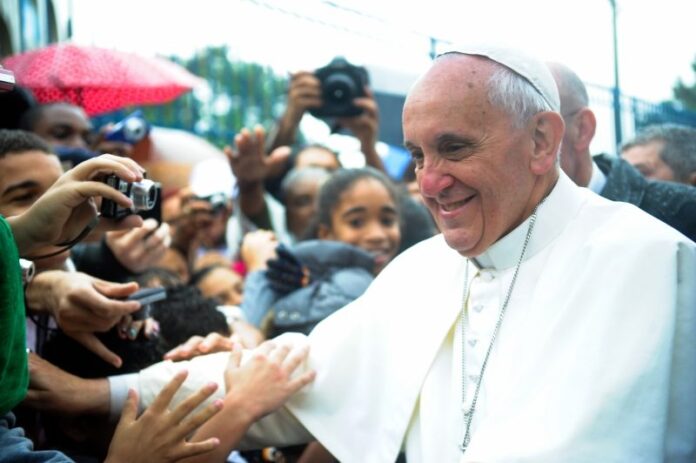COWS, small cells to play major role
All four major U.S. carriers are investing in network upgrades ahead of Pope Francis’ upcoming visit to Philadelphia, but some are worried it may still not be enough.
Verizon Communications and AT&T have already spent nearly $50 million to boost wireless capacity on Benjamin Franklin Parkway in heart of Philadelphia where Pope Francis is expected to speak. T-Mobile and Sprint have also invested in their networks hoping to keep up with the data demands of what mobile industry officials are calling a “mass calling event.”
Experts are comparing the event to a Super Bowl halftime show or presidential inauguration. In what they called a ”targeted surgical solution,” Verizon, AT&T and Crown Castle International Corp installed 37 small cell nodes on light poles between John F. Kennedy Plaza and the Philadelphia Museum of Art to provide close-proximity wireless signals.
Verizon, AT&T and Sprint have all confirmed they will also use portable cells on wheels (COWS), which will be temporarily installed on rooftops. AT&T even went as far as to add a permanent cell tower in the area. Crown Castle will provide fiber-optic data hubs to help handle the data from the small cells. Verizon, AT&T and T-Mobile will all share the small cells, according to a Crown Castle official. Sprint says it’s made permanent capacity upgrades at the Philadelphia Museum of Art, Academy of Natural Sciences, Franklin Institute, Logan Square, and along the Ben Franklin Parkway.
In spite of these upgrades, many are worried that the demand for the estimated one-million person crowd could still be too much.
“When you get into the tens of thousands of people, it is hard for any network to deal with it,” Joe Madden, principal analyst with Mobile Experts, a wireless consulting firm in San Jose, Calif., said. “There will be a moment when everyone tries to upload at the same time,” Madden said. “It’s almost guaranteed that the network will be 100 percent utilized and there will be a lot of blocking.”
Crown’s vice president of sales and business development for small cell networks, Matt Tomlin, believes the networks are ready. ”All the locations are fiber-optic fed, so they can handle all the capacity that the wireless carriers see fit to provide,” he said.
AT&T, Verizon and Crown Castle all participated in a press event showing off the small cells to alleviate concerns about network demands. Spokespeople from all three companies could not say how much capacity would be available to customers at the event.

